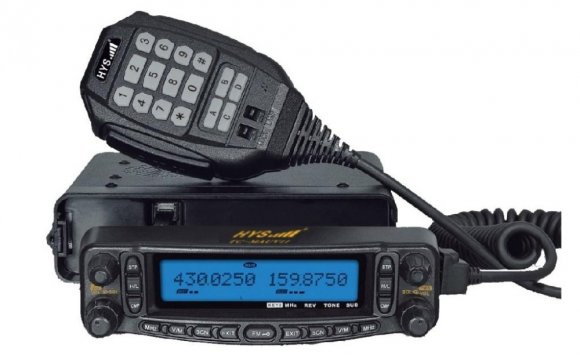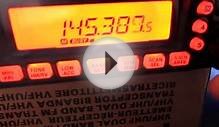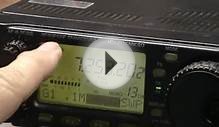
|
As of February 2006, the only equipment I have operational is a Yaesu FT-857D in my truck. Antennas are a Yaesu ATAS-120 (for HF amateur bands and 6 meters) and a Radiall-Larsen NMO2/70B dual VHF/UHF antenna (144 and 432 MHz). This article describes the installation - I show how I mounted the radio and the antennas in my 1997 Mazda B4000 pickup truck. If you own a similar truck or its companion the Ford Ranger, you probably could install a radio in your truck using the same techniques I did here. If you have a different truck or car, you might have to modify some of the specifics of the installation but you may be able to find some ideas here. I have divided this article into several pages because there are lots of photos. Before installing a rig in your vehicleBefore installing a rig in your vehicle, there are a lot of things to consider - starting with safety. I recommend you read the mobile installation and operation sections of the ARRL's Radio Amateur's Handbook for a thorough discussion of factors to consider in a mobile installation. Here are a few tips that come from my years as an amateur radio operator (licensed in 1958). Plan for safe operationYou will be driving your car/truck/whatever and talking on the radio at the same time. The radio will require some attention - volume up and down, change frequency, and the like. It's easy to get distracted from your real mission - driving safely. For this reason, you need to mount the rig where you can see the display and operate the knobs and switches without taking your eyes too much off the road. The only way to figure out how to do this is to spend a LOT of time planning the installation, especially planning where you will mount the rig and the microphone. Most rigs manufactured over the past ten years or so that are intended for mobile operation have removable face plates - that is, the front panel with all the controls pops on and off the main body of the radio and connects to the main body with one or more cables. This arrangement is great for mobile use - the front panel is small and lightweight and usually easy to mount. Run the cables as out of sight as possible and mount the main body of the rig under the front seat, back seat, or wherever. Because the front panel is small and lightweight, it's easy to mount in a place that's readily visible, thereby contributing to safety. The radio is uglyAmateur radio operators love our equipment. It's beautiful. The problem is, we usually are the only people who think this way. To the rest of the world, an amateur radio transceiver with an antenna or two mounted on a car/truck/whatever is, well, UGLY. And if your family has one and only one car, and you slap a radio and a bunch of antennas on it without asking your wife - - - - - So - understand that your beautiful radio has its place and that place probably is NOT Velcroed to the dash of your family mini-van. If you have a vehicle that is yours and you are the sole operator and occupant, then, do what you want. The point of this discussion is that you need to consult everyone else who will be using and riding in the vehicle before you turn it into a mobile radio station. Resale valueIf you plan to sell or trade your vehicle one of these days, you need to be really careful about drilling mounting holes, running cable, splicing wires, and the like. You could easily lower the resale value of your vehicle. Modern vehicles may not like a radioAny vehicle manufactured in the last 15 - 20 years - and anything new - is packed with electronics - relays, microprocessors, switches, sensors, and the wiring harnesses connecting all this stuff. If you screw up one sensor, you could kill the engine and let yourself in for a big repair bill. Remember - a radio is going to be transmitting a relatively powerful signal. My FT-857D puts out 70 watts on the HF bands and 25 watts on VHF and UHF. This is enough radio frequency energy to cause real problems with automotive electronics is that energy gets into the wiring, sensors, microprocessors, etc. Also - and this is IMPORTANT. All vehicles sold in the past few years are equipped with airbags and some vehicles have several airbags. These airbags contain a tiny explosive charge - when the sensor in the airbag senses rapid deceleration (as in an accident), the sensor fires an electrical charge into the explosive, the explosive fires and inflates the airbag. Energy from a transmitter may be enough to set off the airbag - and even if you are not injured when the airbag fires, it'll cost you a lot of $$$$$ to put in a new airbag. Another problem is seat belt retractors. Many vehicles have, in their seatbelt retractors, an explosive charge like the airbag. In an accident, this charge fires and tightens and locks the seatbelt - to keep you from flailing around in the vehicle. Again, stray radio frequency energy could fire your seatbelt retractor. The solution to this is:
Plan, plan, and plan some moreBEFORE you start drilling holes, attaching double-sided tape, or slapping on Velcro, PLAN. THINK ABOUT WHERE EVERYTHING WILL MOUNT, WHERE EVERY WIRE AND CABLE WILL RUN. Set up the equipment and wires in the same configuration they will be installed and look at them:
A word on drilling holes. You cannot be too careful - look and feel before you drill. Peel back the carpet and see what you are drilling into. Go to great lengths to avoid drilling into something... |
INTERESTING VIDEO












